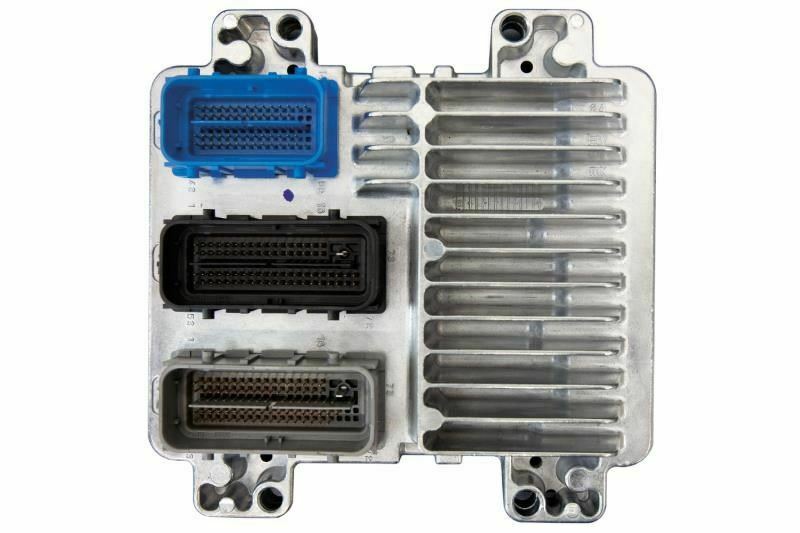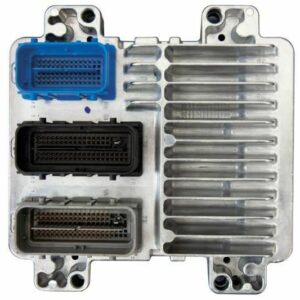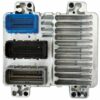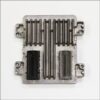Restore Peak Performance and Reliability to Your Vehicle
As a technician with over two decades of experience under the hood, I’ve seen firsthand the frustration a failing Engine Control Module (ECM) can cause. Your 2009 SAAB 9-7X might be running rough, stalling unexpectedly, or refusing to start at all—all pointing to the vehicle’s central computer. This isn’t just an inconvenience; it’s a critical failure that affects performance, fuel economy, and safety. This replacement 2009 SAAB 9-7X Engine Module is the definitive solution to get you back on the road with confidence.
The ECM, or engine computer, is the brain of your vehicle’s powertrain. It makes thousands of calculations per second to manage everything from the fuel injectors and spark plugs to the transmission shift points. When it fails, the symptoms can be confusing and often misdiagnosed. That’s why we’ve made this process as simple and reliable as possible. The single most important feature of this module is that it arrives at your door pre-programmed with the latest GM software, specifically matched to your vehicle’s VIN. This eliminates the need for expensive dealership programming or specialized scan tools, saving you time and hundreds of dollars.
Case Study: The Ghost in the Machine
I remember a 2009 Trailblazer SS (which uses a very similar E67 ECM) that came into my shop with a maddeningly intermittent stalling problem. The owner had already replaced the fuel pump and a handful of sensors with no luck. There were no hard codes, just a few random communication errors (U-codes) in its history. After hours of diagnostics, we hooked up a scope to the ECM’s power and ground circuits. We saw a clean signal until the engine warmed up, at which point we’d see a sudden voltage drop inside the module itself just before it would stall. The ECM was failing internally under heat soak. We installed a VIN-programmed module just like this one, and the vehicle ran perfectly. It’s a classic example of how a failing computer can mimic other component failures, and why a quality, correctly programmed replacement is the only true fix.
Is Your Vehicle Showing These ECM Failure Signs?
- ✔️ Check Engine Light is illuminated with communication-related codes (e.g., U0100, U0101) or internal processor codes (P0601, P0606).
- ✔️ The engine cranks but will not start.
- ✔️ Unexplained drops in fuel economy or poor engine performance.
- ✔️ Intermittent stalling or hesitation, especially after the engine warms up.
- ✔️ Harsh or erratic automatic transmission shifting.
- ✔️ Issues with other electronic systems, like the instrument cluster or anti-theft system, not communicating with the engine computer.
Your Straightforward ECM Installation Guide
Installing your new 2009 SAAB 9-7X Engine Module is a manageable job for a DIYer with basic tools. The key is our VIN programming service, which makes this a true plug-and-play repair.
- Safety First: Always disconnect the negative terminal from your vehicle’s battery and wait at least 10 minutes to allow all modules to power down completely.
- Locate the ECM: On the 2009 SAAB 9-7X, the ECM is typically located in the engine bay on the driver’s side (LH engine). Consult your service manual for the exact position on other compatible models.
- Disconnect Connectors: Carefully release the locking tabs on the electrical connectors and pull them straight out from the module. Never force them. Inspect the pins for any corrosion or damage.
- Remove the Old Module: Unbolt the old ECM from its mounting bracket. Keep the hardware, as you may need to reuse it.
- Install the New Module: Mount your new, pre-programmed ECM securely onto the bracket. Reconnect the electrical connectors, ensuring they click firmly into place.
- Final Steps: Reconnect the negative battery terminal. The vehicle may require a security relearn procedure, which typically involves turning the key to the ‘ON’ position for 10-15 minutes. This allows the other modules to recognize the new ECM. Start the engine and verify that the check engine light is off and the vehicle runs smoothly.
Verified Compatibility for Your Vehicle
This module, part number 12636659, is a direct replacement for a wide range of General Motors vehicles. It is also interchangeable with service numbers 12639300, 1263605, 12628993, 12628911, 12625453, 12622175, 12630464, and 12678512. Please confirm your vehicle is on the list below:
- Buick Lucerne: 2009-2011 (4.6L)
- Cadillac CTS: 2009 (6.2L)
- Cadillac DTS: 2009-2011
- Cadillac SRX: 2009 (4.6L)
- Cadillac STS: 2009 (4.4L, 4.6L), 2010 (4.6L)
- Cadillac XLR: 2009
- Chevrolet Colorado: 2009-2012 (2.9L, 3.7L)
- Chevrolet Corvette: 2009 (ZR1)
- Chevrolet Trailblazer: 2009 (6.0L)
- GMC Canyon: 2009-2012 (2.9L, 3.7L)
- GMC Envoy: 2009 (5.3L)
- Hummer H3: 2009-2010
- SAAB 9-7X: 2009
By providing your VIN at checkout, you ensure this 2009 SAAB 9-7X Engine Module is a perfect match, programmed and ready for installation right out of the box.
Frequently Asked Questions
Do I need to do any programming or flashing myself?
No. We handle all the programming for you before shipment. Simply provide your vehicle’s VIN during checkout, and the module will arrive with the latest GM software, ready for installation.
What is a security relearn procedure?
This is a simple process that allows your vehicle’s anti-theft system to synchronize with the new ECM. It usually involves leaving the key in the ‘ON’ position for about 10-15 minutes. Specific instructions vary slightly by model but are easily found online or in a service manual.
Is this part difficult to install for a DIYer?
With basic hand tools and our pre-programming service, this is a very manageable job. The most important steps are disconnecting the battery and being careful with the electrical connectors. Our step-by-step guide will walk you through it.
Will this fix my check engine light?
If the check engine light is caused by a failing ECM (e.g., codes P0601-P0606 or U-codes), then this part is the correct fix. It is always recommended to have a proper diagnosis to confirm the ECM is the point of failure before ordering.
How do I find my vehicle’s VIN?
Your 17-digit Vehicle Identification Number (VIN) can be found on your vehicle’s registration, insurance card, or on a plate on the driver’s side of the dashboard, visible through the windshield.



